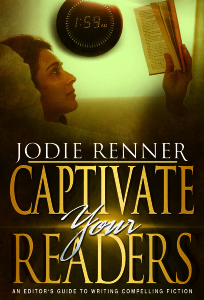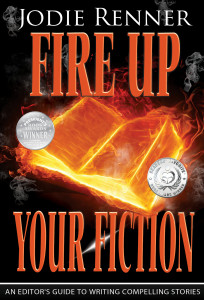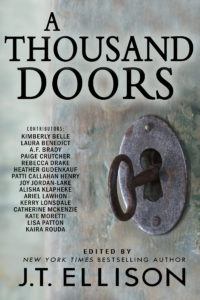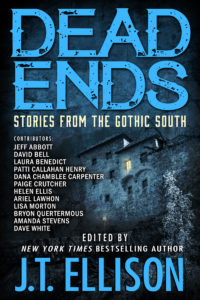Tag Archives: anthologies
How Not to Treat a Writer (and a Bonus Guide on Building Good Anthologies)
Let me tell you a story.
On December 19th, I received an email through my website contact link suggesting that I might submit a story to an upcoming anthology of “dark and speculative fiction.” Okay, I thought. Sounds like me. Reprints were okay (if the work was requested, and it appeared that mine had been), and there was actually money involved. The stated theme of the anthology was vague and used the phrase “we may be looking for…” But I’m always game for submitting work, and women’s sexuality was one of the mentioned subjects. Okay, I thought. That sounds like me, too. Knowing that the publisher was a legit literary fiction house, I clicked through to the open call for submissions page.
I don’t want to embarrass anyone in this story, so I’m not going to get specific about all of the submission details. The story I had in mind was one I had published in Patricia Abbott’s Discount Noir, and I had long thought of expanding it. I was pretty sure it fit the women’s sexuality/female protagonist bill. Except: The deadline was to be December 30th. Yes, twelve days after I received the email, and only eighteen days after the date on the submission page.
Twelve days! It’s madness to think anyone but a few very motivated writers could put out a finished 2-5K word story in that brief amount of time. Still, I had the story on hand and was thinking of adding only a thousand words or so. As I said, I’m game. Christmas got busy, and I put it on the back burner. After a very relaxing holiday, I worked on it on the 29th and 30th. I’ll confess that I submitted it after midnight on the 30th, but it was still the 30th in Alaska, so I figured I was good. And, if not, no big deal. It was a fun exercise to work on the story.
I received the acknowledgement immediately. All was well. Then, later that same day, the 31st, I received a polite form rejection email.
There’s nothing like receiving a rejection for a story on New Year’s Eve. It was disappointing, as all rejections are. I had a lot of confidence in the story, so it was a little surprising. I went through six stages of story rejection grief, and enjoyed the seventh (an extra glass of wine), and decided the story would be a good addition to the ebook short story collection I want to do later this year.
But, wait! Less than an hour later, I received an email that I had been sent the wrong form email. They actually meant to send the one telling me they were considering the story and would get back to me in a month. They were sorry for the confusion, they said.
Ha! Ha! said I. And forgot about it the very next day.
This past Monday, nine days later, I received my response. They “love” the story, but “have since decided on a theme” that this story doesn’t quite fit. Oh, by the way, maybe I have another one that would suit their newly chosen theme? They only need it by January 16th.
*sigh*
There are so many possible responses. But the one that immediately comes to mind is a less lovely version of WTH? (That’s not the one I sent.)
My work has been in quite a few anthologies the past few decades, and I’ve edited five and published two of those myself. Yet I have never been involved in such an unprofessional exchange.
Publishing isn’t, “Hey, kids! Let’s put out a book!” Well, it can be, but the process needs to stay professional. And it would seem to me that a primary tenet of professionalism would be: Try not to alienate prospective writers.
Here’s a handy list for creating an anthology:
- Define your theme. Make it broad, or make it narrow. Be flexible enough to push the boundaries a bit if you need to. The narrower your focus, the smaller your natural audience will be.
- Put together a budget. Will you pay the writers in cash or copies or both?
- Get a few writers on board that you know well so that if you will be going to a publisher, you have committed work from writers they recognize.
- Write a proposal whether you will be shopping it to publishers or not. It will give you good guidelines against which you can measure submissions.
- Find a publisher or, if you’re game and have some knowledge of publishing, put it out there yourself. How will it be distributed? Through regular distributors? Online vendors?
- Decide if you want all original work or reprints or both.
- Plot out a schedule backwards from your desired pub date. Give yourself three-four months before the actual pub date to assemble, edit, copyedit, and format the stories. Writers often miss deadlines. Build in an extra month for dawdlers or disaster. Allow writers three to six months for writing. It might as well be three because 90% of them will write the story in the last available month.
- Scheduling six to nine months to put the whole thing together is reasonable. This is variable of course. Using all reprints may be faster—but often the writer will need to get permissions from another, larger publisher. And the larger they are, the slower they are. (It took seven weeks to get permission from one publisher for a Surreal South anthology, and we almost had to drop the story.)
- Establish who will be the contact for all authors. Who will do the mailings and keep track of the files?
- NOW open submissions for your slush pile, and give folks a few months to come up with stories and write them. If you have a solid core of committed writers, you have a head start. If you give everyone three months to write and submit, you’ll have plenty of time to read and choose.
- Acknowledge submissions.
- Get someone working on the cover art.
- Draw up a contract. Do you want exclusive, or non-exclusive rights?
- Choose the stories. Have a couple runners-up in case some submissions get pulled.
- In the name of all that’s holy, send the appropriate rejection and acceptance emails to all of the writers.
- Assemble the manuscript. Make sure all the rights are covered.
- Plan advertising (or work with marketing dept.)
- Write cover copy.
- Have someone write an introduction that teases the theme and mentions all the accepted stories by name.
- Make any necessary edits and okay them with the writers.
- Copyedit the stories, send the manuscripts back to the writers for approval. Give them a deadline for getting back to you.
- Get a blurb or two if you can. Put galleys up on NetGalley, etc. to encourage reviews.
- Format, print, distribute.
NOTE: This is not a hard and fast schedule for every anthology. Big ones will take longer. Working with inexperienced writers will take longer. If you’re doing an ebook anthology of reprints or one that is very small, you may be able to do all this stuff in a few weeks.
Lisa Morton, Carolyn Haines, and I all wrote our stories for Haunted Holidays: Three Short Tales of Terror and had the book out in paper and ebook on multiple platforms in three months.
The point is, take your time. Think it through at the beginning of the project. Be friendly but professional in your communications with your writers. Admit it if you screw up, but don’t set yourself up for failure by setting unrealistic expectations for yourself and everyone else involved.
As a writer, what’s the worst submission experience you’ve ever had?
Have you ever put together and anthology? How did it go?
Laura Benedict is the author of the Bliss House trilogy of novels. She blogs daily at her website. Visit her on Twitter, too.
How are short stories evaluated for publication or awards?
 – A glimpse into the minds of acquiring editors and judges for short (or any) fiction
– A glimpse into the minds of acquiring editors and judges for short (or any) fiction
Jodie Renner, editor & author @JodieRennerEd
Have you tried your hand at writing short stories yet? If not, what’s holding you back? As award-winning blogger Anne R. Allen said in an excellent article in Writer’s Digest magazine, “Bite-sized fiction has moved mainstream, and today’s readers are more eager than ever to ‘read short.’” To check out Anne’s “nine factors working in favor of a short story renaissance,” see “9 Ways Writing Short Stories Can Pay off For Writers“, and there’s more in her post, Why You Should be Writing Short Fiction.
Here’s another Argument for Writing Short Stories, by Emily Harstone. She says, “Writers who are serious about improving and developing their craft should write short stories and get editorial feedback on them, even if they are never planning on publishing these short stories. Short stories are one of the best ways to hone your craft as a writer.”
Okay, you’ve decided to take the plunge and craft a few short stories. Good for you! Next step: Consider submitting some of them to anthologies, magazines, or contests. But wait! Before you click “send,” be sure to check out my 31 Tips for Writing a Prize-Worthy Short Story, then go through your story with these tips in mind and give it a good edit and polish – possibly even a major rewrite – before submitting it.
What are some of the common criteria used by publications and contests when evaluating short story submissions?
I recently served as judge for genre short stories for Writer’s Digest Popular Fiction Contest, where I had to whittle down 139 entries to 10 finalists, but I wasn’t provided with a checklist or any specific criteria. However, a friend who regularly submits short stories to anthologies, magazines, and contests recently received a polite rejection letter from the editor of a literary magazine, along with a checklist of possible reasons, with two of them checked off specifically relating to her story.
While useful, the list of possible weaknesses is very “bare bones” and cries out for more detail and specific pointers. Editors, publishers, and judges are swamped with submissions and understandably don’t have time to give detailed advice for improvement to all the authors whose stories they turn down. Perhaps you could help me interpret and flesh out some of these fairly cryptic, generic comments/criticisms, and add any additional points that occur to you, or checklists you may have received.
Can you think of other indicators of story weaknesses that could be deal-breakers for aspiring authors submitting short stories for publication? Or do you have links to online publishers’ checklists for fiction submissions? Please share them in the comments below.
Here’s the list my friend received, with my comments below each point. Do you have comments/interpretations to add?
Checklist from a Publisher/Editor/Publication in Response to Short Story Submissions
“Thank you for submitting your short story to …. We’ve given your work careful consideration and are unable to offer you publication. We do not offer in-depth reviews of rejected submissions, due to time constraints. Briefly, we feel your submission suffered from one/several of the following common problems:”
– “Tone or content inappropriate for…” (publisher / publication / anthology / magazine)
Check their submission guidelines and read other stories they’ve accepted to get an idea of the genre, style, tone, and content they seem to prefer.
– “Stylistic and grammatical errors; too many typos”
Be sure to use spell-check and get someone with strong skills in spelling, grammar, punctuation, and sentence structure to check it over carefully for you. Read it out loud, and where you pause briefly, put in a comma. Where you pause a little longer, put in a period. You could also try using editing software or submit it to a professional freelance editor. This last choice has the most likelihood of helping you hone your fiction-writing skills.
– “Structure problems”
For a novel, this could mean some chapters could be rearranged, shortened, or taken out. What do you think it could mean for a short story? Too many characters? Too many plot lines?
– “Formatting problems made reading frustrating”
Be sure your story is in a common font, like Times New Roman, 12-point, and double-spaced, with only one space after periods and one-inch margins on all four sides. Don’t boldface anything or use all caps. For more white space and ease of reading, divide long blocks of text into paragraphs. Start a new paragraph for each new speaker. Indent paragraphs. Don’t use an extra line space between paragraphs. Use italics sparingly for emphasis. For more specifics on formatting, see “Basic Formatting of Your Manuscript (Formatting 101)”.
– “Characters were problematic/unbelievable/unlikeable”
Your characters’ decisions, actions and motivations need to fit their personality, background, and character. And make sure your protagonist is likeable, someone readers will want to root for.
– “Content and/or style too well-worn or obvious”
This likely refers to a plot that’s been done a million times, with cookie-cutter characters and a predictable ending.
– “Word choice needs refinement”
This one could cover the gamut from overused, tired words like nice, good, bad, old, big, small, tall, short to overly formal, technical, or esoteric words where a concrete, vivid, immediately understandable one would be more effective.
– “Overbearing or heavy-handed”
This probably refers to a story where the author’s agenda is too obvious, too hard-hitting, maybe even a bit “preachy,” rather than subtle, allowing the reader to draw their own conclusions.
– “Nothing seems to have happened”
To me, this probably indicates no major problem or dilemma for the protagonist, not enough meaningful action and change, and insufficient conflict and tension.
– “Strong beginning, then peters out”
This is an indicator that your plot needs amping up and you need to add rising tension, suspense, and intrigue to keep readers avidly turning the pages. Also, flesh out your characters to make them more complex. Give your protagonist secrets, regrets, inner conflict, and a strong desire that is being thwarted.
– “Needs overall development and polish.”
This indicates you likely need to roll up your sleeves and hone your writing skills. Read some writing guides (like those by James Scott Bell or my Captivate Your Readers, Fire up Your Fiction, or Writing a Killer Thriller). Also, read lots of highly rated published short stories, paying close attention to the writers’ techniques. Here’s where a critique group of experienced fiction writers or some savvy beta readers or a professional edit could help.
– “We didn’t get it.”
This is likely a catch-all category that means the story didn’t work for a number of reasons. This could be an indicator to put this story aside and hone your craft, critically read other highly rated stories in your genre, then, using your new skills, craft a fresh story.
“While all of these criticisms open doors to further questions, we regret that we cannot be more constructive….”
That’s understandable. They just don’t have time to critique or mentor every writer who contacts them. But I hope my comments above help aspiring fiction writers hone your craft and get your stories published – or even win awards for them. Good luck! For tips on how to actually submit, check out “Writing Short Stories? Don’t Make These 4 Submission Mistakes“.
 Jodie Renner is a freelance fiction editor and the award-winning author of three craft-of-writing guides in her series An Editor’s Guide to Writing Compelling Fiction: Captivate Your Readers, Fire up Your Fiction, and Writing a Killer Thriller. She has also published two clickable time-saving e-resources to date: Quick Clicks: Spelling List and Quick Clicks: Word Usage. You can find Jodie at www.JodieRenner.com, www.JodieRennerEditing.com, her blog, http://jodierennerediting.blogspot.com/, and on Facebook, Twitter, and Google+.
Jodie Renner is a freelance fiction editor and the award-winning author of three craft-of-writing guides in her series An Editor’s Guide to Writing Compelling Fiction: Captivate Your Readers, Fire up Your Fiction, and Writing a Killer Thriller. She has also published two clickable time-saving e-resources to date: Quick Clicks: Spelling List and Quick Clicks: Word Usage. You can find Jodie at www.JodieRenner.com, www.JodieRennerEditing.com, her blog, http://jodierennerediting.blogspot.com/, and on Facebook, Twitter, and Google+.



